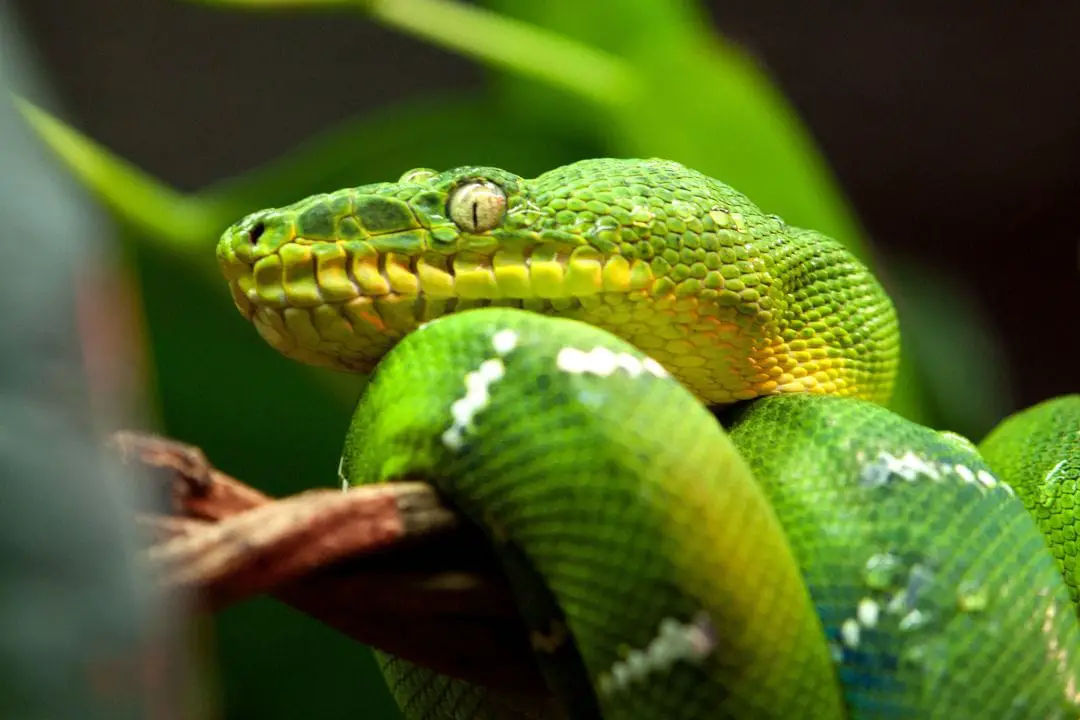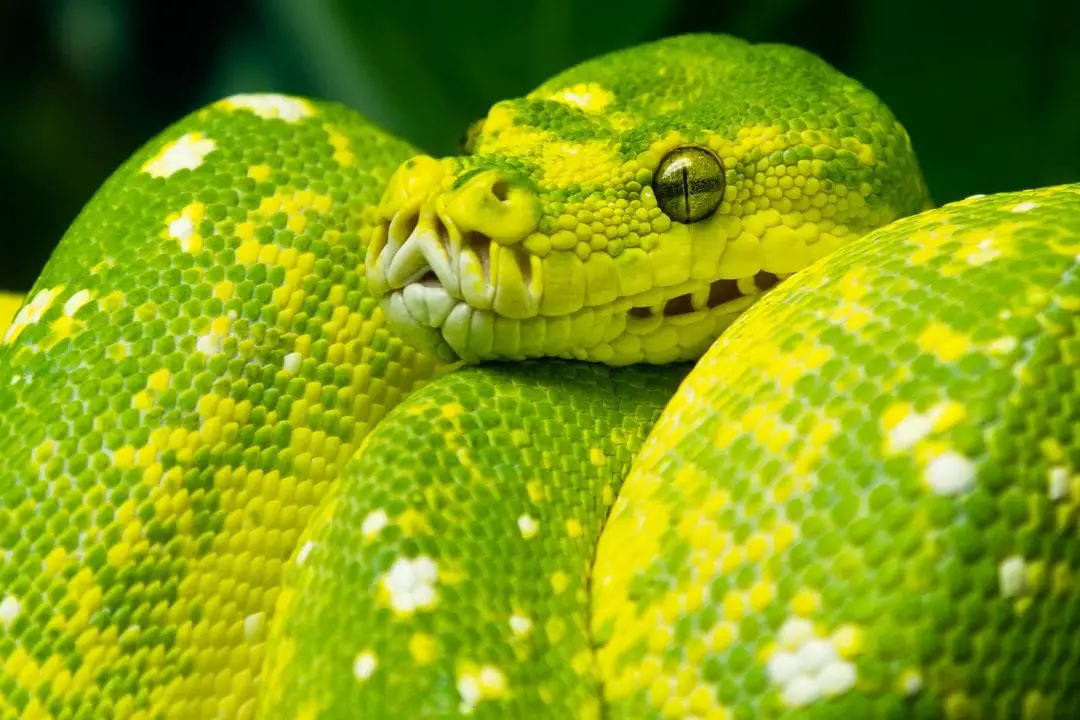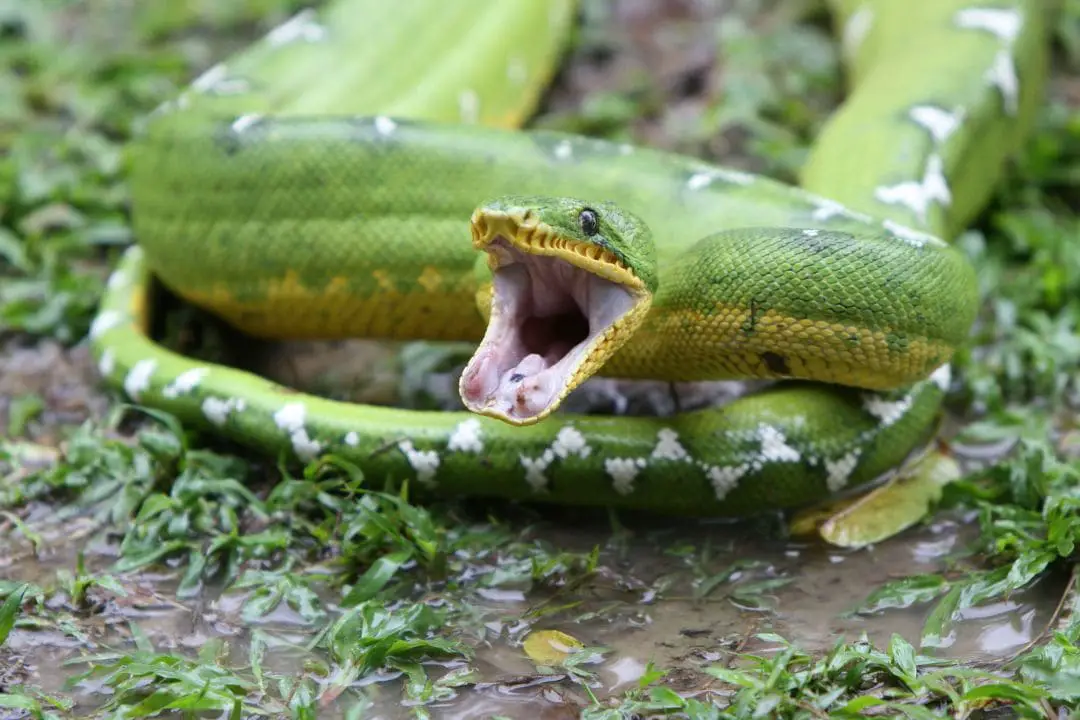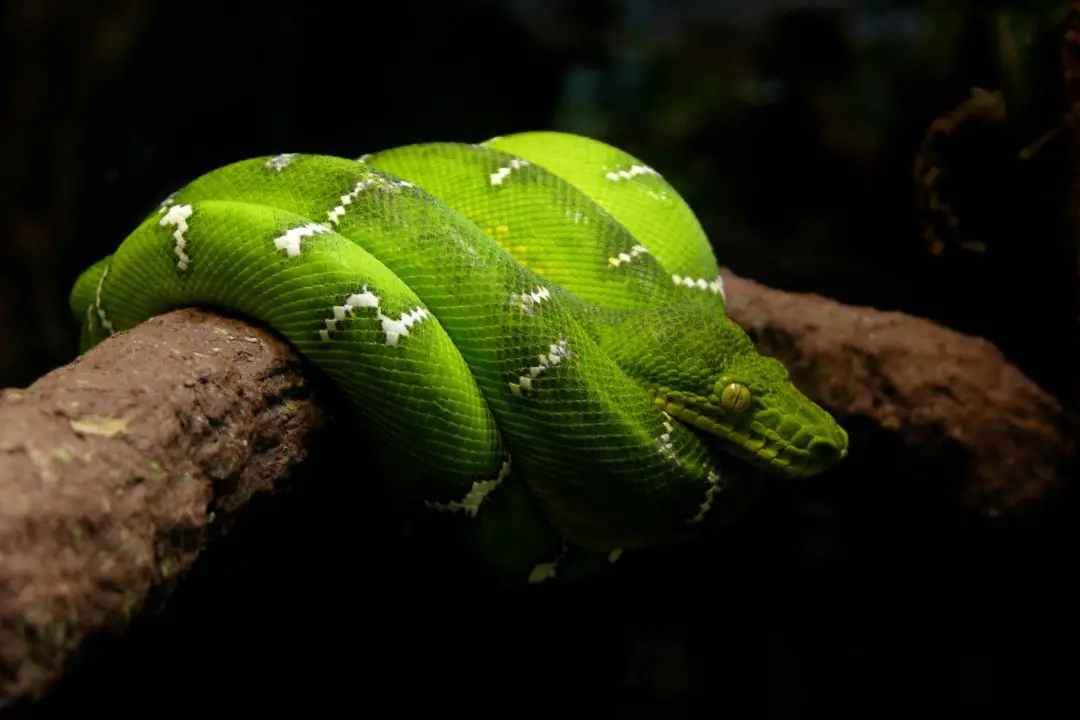Are you considering an emerald tree boa? Or are you just excited about the species and you want to know more? Either way, let’s get into sizing up this beautiful species.
How Big is an Emerald Tree Boa?
On average, the emerald tree boa will grow to around six feet long. Though, of course, since it spends the vast majority of its time wrapped over a tree branch you won’t really notice how long this animal is until it is dangling down to get a drink of water or striking at you.
One of these is a little more common than the other and I’m sure that long-time keepers of the species know which one that is.
Generally speaking, this means this is not a very large snake. The typical corn snake (P. guttaus) is of similar length and honestly may end up being heavier.
Emerald tree boas only end up weighing in around 2-4 pounds and the familiar, common corn snake usually ends up a little weightier (especially in captivity).
Indeed, the snake should appear to be a slender-bodied animal compared to many of the boa family or when compared to more commonly traded pythons.
The ‘big’ thing about the emerald tree boa is their bite, which can seriously wound even human beings.
Keepers must be careful with this gorgeous, relatively small boa that is very territorial and ready to strike when their enclosure door is opened.
Captivity vs Wild vs Zoo ETB Sizes
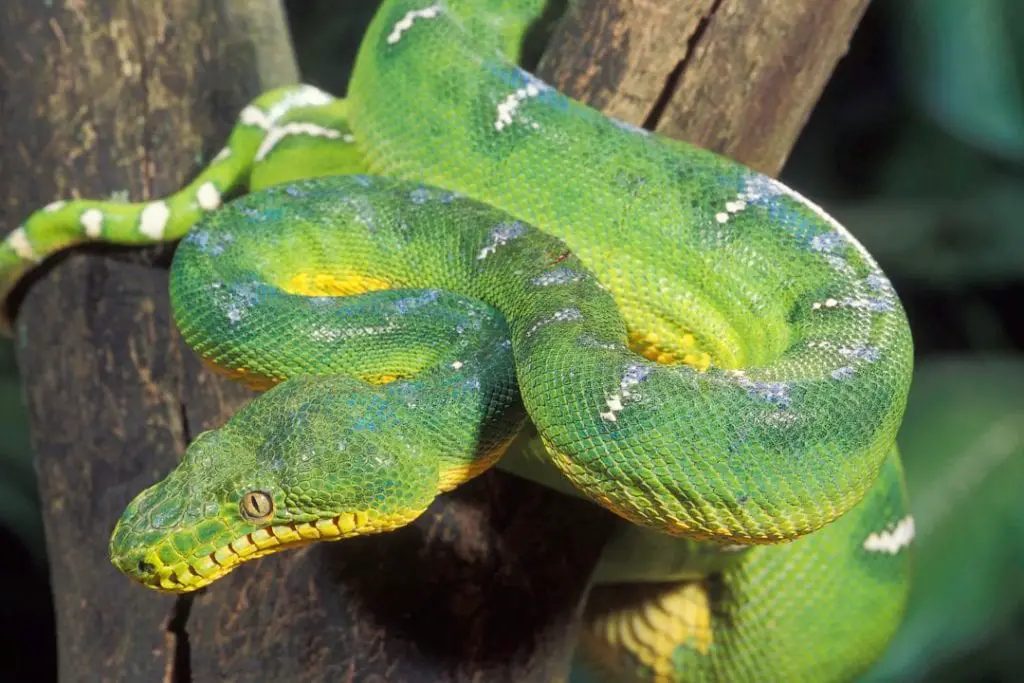
Many emerald tree boas kept by inexperienced keepers will have difficulty keeping weight. This is largely due to poor keeping and a lack of humidity. – See my Emerald Tree Boa Care Guide for a complete husbandry overview.
These snakes cannot produce feces if they are kept at lower humidity levels than optimum and may even starve to death because of blockages.
If they cannot go, they will not eat in most cases. In the hands of an inexperienced keeper, emerald tree boas are likely to be leaner than they should be.
In the wild, there is some variety regarding size.
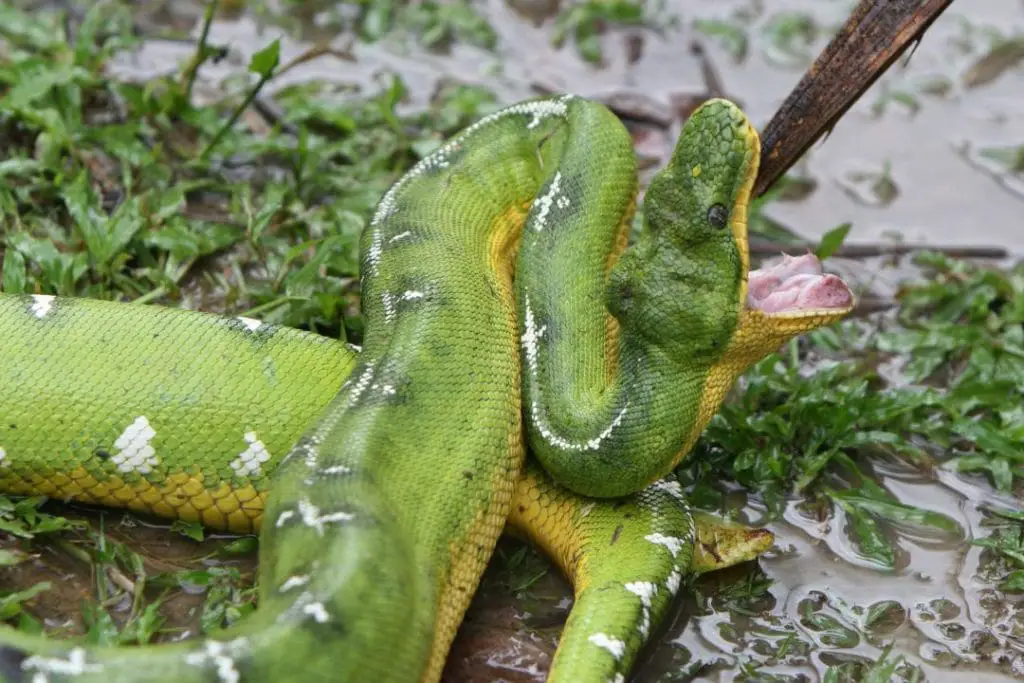
Seven and even eight feet long have been spotted, though these snakes are very rare since this species is often predated upon.
The lack of movement and their generally poor sense of danger means that these snakes do not often survive to die of old age. However, they do have access to a wider variety of food and often more of it.
Emerald tree boas predate upon birds, snakes, lizards, rodents, bats, and all sorts of wildlife in the wild and there is a question as to whether or not the vast variety of species vs rats only in captivity does lend to a better overall diet, well-being, and growth pattern.
Zoos and museums with these animals kept as educational displays (where they often flourish due to simply being left alone) may also see additional growth beyond the typical at-home keeper.
Again, there is a little more variety of food available, usually due to the plausibility of being fed within the same commissary that keeps so many other species fed.
This allows zoos to offer a number of correctly-sized prey items that will probably round out the snake’s nutritional needs a little more aggressively than a rat every 2-4 weeks.
That said, a properly cared for captive-bred emerald tree boa, in the right keeper’s hands, will thrive and easily grow within the 2-4 pound range and 6-ish foot range within a few years.
How Growth is Affected

There is a myth that many small animals, herps, and fish will only grow to the size of their enclosure. This, of course, led many people to place animals in too-small enclosures for a long time.
Frequently it is the reason we still see enclosure “kits” around today; the idea was to sell these kits as introductory enclosures and have new keepers upgrade over time.
Instead, animals lived out their entire lives in these small enclosures.
Things are getting better on that front, but how does that relate to emerald tree boas?
The idea still hovers around now and again and emerald tree boas are a species frequently found in too-small enclosures.
While this does affect how they grow, it doesn’t do it in such a way that you may consider.
Rather than actually making the snake think, “Oh, this enclosure is not large enough for me to get bigger. I’ll just stay small” or some sort of chemical something or other happening that is equivalent to that, the snake simply does not eat enough to get to its proper adult size.
Depression, malnutrition, a lack of comfort; all of these things can lead to a snake that does not care enough to eat or regurgitates its food.
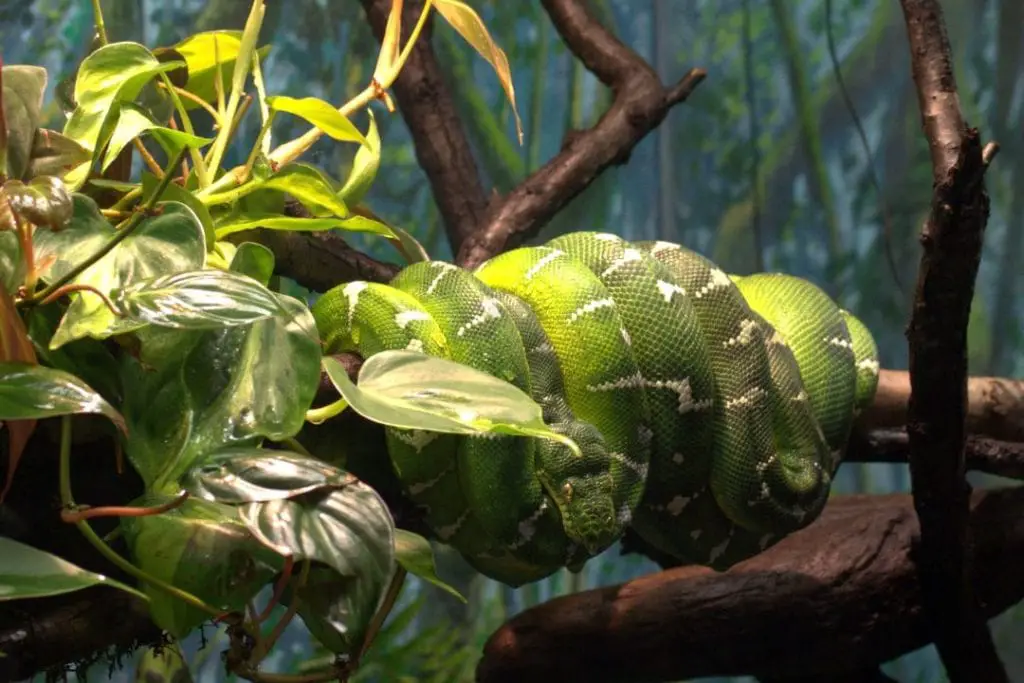
Poor keeping habits can also end up with emerald tree boas having problems growing.
We mentioned dehydration, a very common problem in this species, a little earlier in this article.
These snakes require 80+% humidity at all times and, without it, often have compaction issues.
The lack of being able to pass food naturally through the digestive tract can also lead to poor weight gain or additional length growth.
Growth can also be slowed by not having a large enough prey item. Since emerald tree boas eat so infrequently compared to more common snake species, some keepers may try to “finish off” a bag of small rats when the snake is actually ready for mediums (or, in rare cases, larger).
This can effectively starve the snake into waiting to grow due to a lack of nutrients. While the snake does not seem visibly harmed, serious problems can arise.
Ultimately, if your snake is not growing properly, you should speak with your vet about the issue and look for a solution as soon as you can.
Conclusion
We’re glad that you’ve joined us to talk about this lengthy tail on the skinny about snake growth.
Interested in learning more?
Or do you have questions that we might be able to help you answer? Leave a comment or two down below and we’ll get back to you soon. Happy herping!
Resources
Sethna, J.M., 2021. Activity Budget and Spatial Behavior of the Emerald Tree Boa Corallus batesii.
